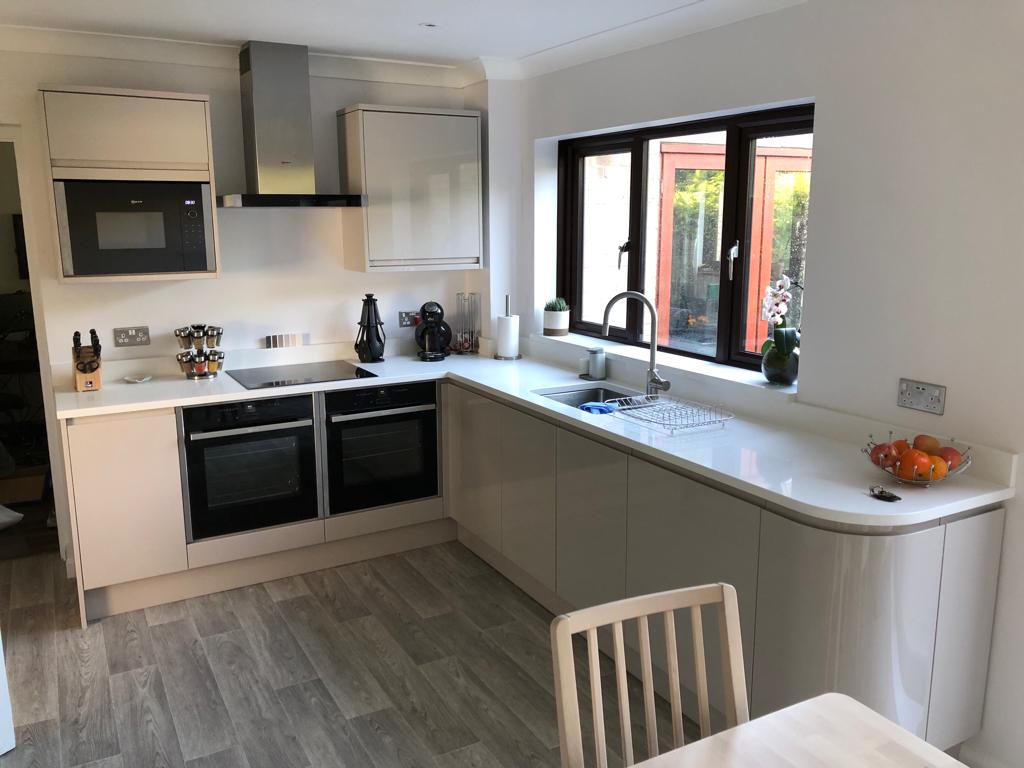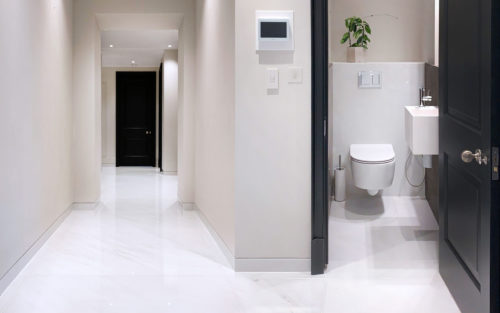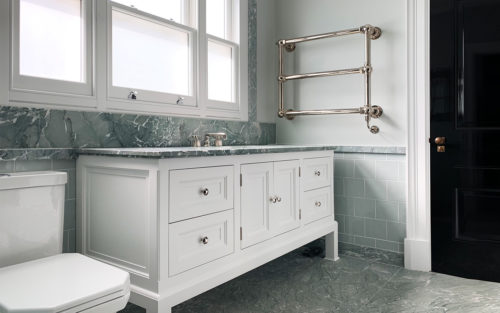At Marble & Granite we hold the firm belief that marble is a wonderful stone. Of course, you would expect us to say that, but there really isn’t another stone like it. Marble has an almost magical kind of luminescence about it that sets it apart from other stones. It also has an incredible range of colours.
Many people believe that marble is white – period. It is true that there is a lot of marble that is white, albeit with a huge range of different veining and swirls within it, which are caused by other minerals present when the marble was formed. However, you can get marble in a huge choice of other colours such as Green Guatemala, Rainforest Brown (fantastic veining), Rosso Alicante which is not so much red as orange, Brown Caravaggio, and even – believe it or not – black. In fact, the term “spoiled for choice” might have been invented for marble.
Marble is a metamorphic rock – metamorphism being simply a grand word for a stone produced under great heat and pressure – and containing many different minerals, which are what gives it the colors and the swirls and patterns. Because it is a natural stone, no two pieces are ever the same, so if you decide to have marble worktops in Kingston you can be sure of one thing: they will be unique. Nobody else, anywhere in the world, will have the same patterns and colors in their worktops as you do.
Strangely enough, marble began life on the planet as a life form. Yes, it may be difficult to believe, but that marble worktop you are considering began as the shell of sea creatures – crabs, lobsters, etc. – which became chopped into tiny pieces and dissolved on the sea-bed. These transformed into limestone which may have occasional layers of clay or sand incorporated but is mostly composed of disintegrated shells formed on the sea-bed, and which are chiefly the mineral calcite.
Over time, the ocean floor spreads apart and slips underneath continents at their edges and is dragged down into the Earth’s crust where things can get considerably hotter. The heat and pressure transforms the grains of calcite and fuses them together under pressure while at the same time pushing any clay or sand particles around and producing the swirls and veins that you see in finished marble.
Different minerals will give it different colours such as green marble, which is tinted by serpentine, as is deep red marble, strangely enough. Marble which is pink, or a gold colour, contains iron oxide, while grey marble contains graphite which is formed from the carbon in seaweed, algae, and even fish.
So when you choose marble as the stone for your worktops, it is worth remembering that it was once a mix of living creatures. And that is why every slab of marble is unique.
Since it is formed from living creatures and plants, marble is not the hardest stone on the planet, and it does need a certain amount of care. Although it feels hard to the touch, it is what is known as a soft stone, and as such is to some extent porous. On the Mohs scale, it has a hardness of three, which is not all that hard, and therefore is easy to carve, which is why it has been used for so many different sculptures. However, it also means that it is susceptible to staining, so any spills should be wiped up straight away and not left. Marble worktops should also be sealed in order to keep them free of stains.
Equally, you must not chop or cut foods on marble as it will scratch. That goes for most stones anyway, so you should always use a chopping board. Furthermore, you must not place hot pans straight off the hob or out of the oven on the surface, but that also applies to other stones: use a trivet.
Nonetheless, if you can put up with the fact that marble does need a little TLC – it is well worth it for the amazing shimmering luminosity and the stunning patterns that you will have on your very own, one-off, marble worktops.



